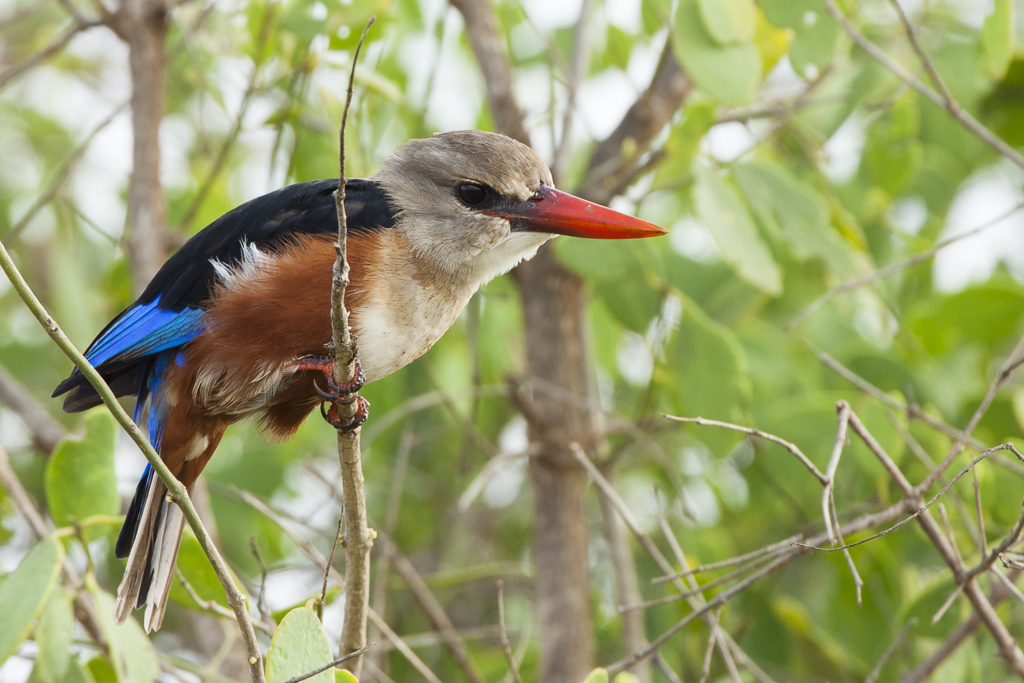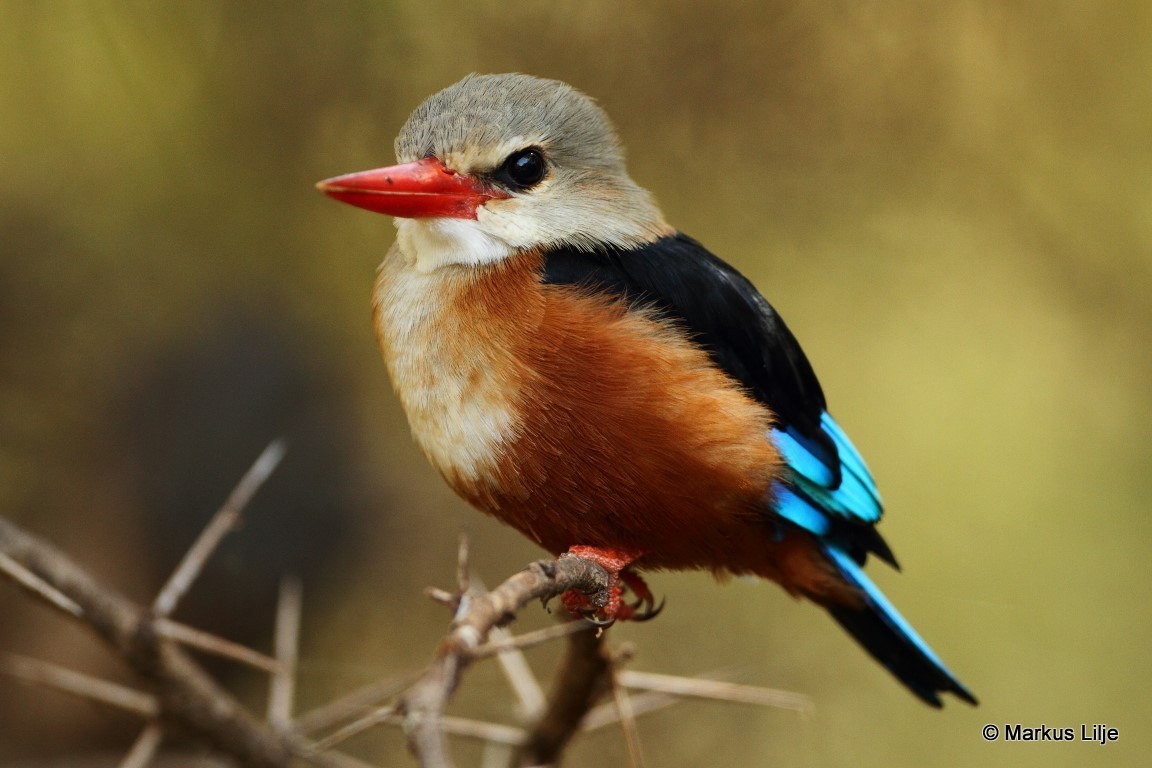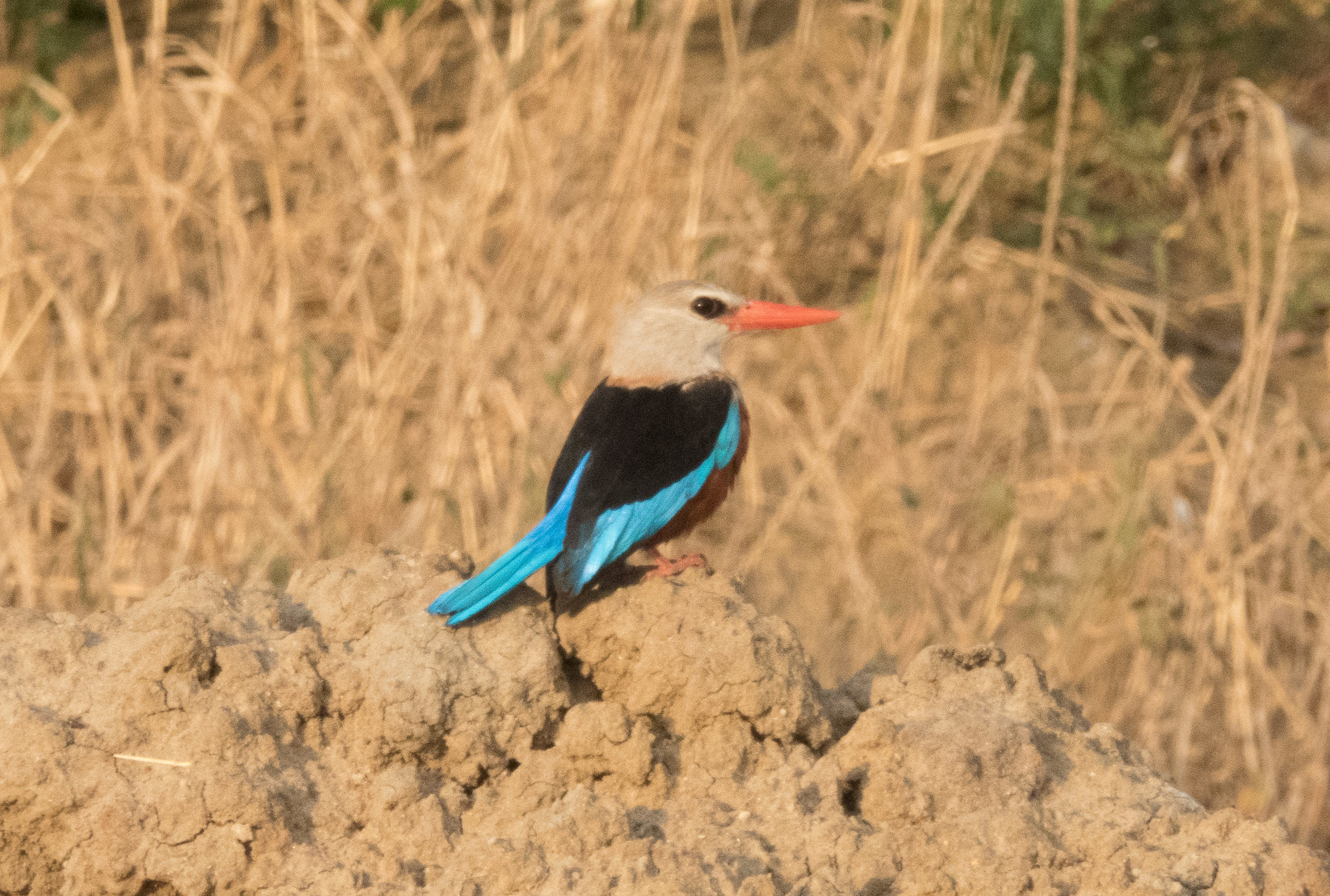- Home
- Conservancy
- Grey-headed Kingfisher
WHERE TO SEE Grey-headed Kingfisher
Description
Description
The sexes are similar. The adult of the nominate race H. l. leucocephala has a pale grey head, black mantle and back, bright blue rump, wings and tail, and chestnut underparts. Subspecies H. l. pallidiventris has a darker grey head and paler chestnut underparts but is otherwise similar. The beak is long, red and sharp. This bird grows to an average length of 21 cm (8.3 in). The song is a succession of notes, ascending, descending and then ascending again, becoming increasingly strident. The warning call is a series of sharp notes, "tchk, tchk, tchk, tchk".
Distribution And Habitat
The grey-headed kingfisher is found in tropical and semi-tropical Africa and the Arabian Peninsula. Its range includes Angola, Benin, Botswana, Burkina Faso, Burundi, Cameroon, Cape Verde, Central African Republic, Chad, Congo, Democratic Republic of Congo, Djibouti, Eritrea, Ethiopia, Gabon, Gambia, Ghana, Guinea, Guinea-Bissau, Ivory Coast, Kenya, Liberia, Malawi, Mali, Mauritania, Mozambique, Namibia, Niger, Nigeria, Oman, Rwanda, Saudi Arabia, Senegal, Sierra Leone, Somalia, South Africa, South Sudan, Sudan, Swaziland, Tanzania, Togo, Uganda, Yemen, Zambia and Zimbabwe. Its typical habitat is woodland, scrub and cultivated areas, up to altitudes of about 2,200 m (7,200 ft)
Fun Facts
Ecology
A dry-country kingfisher of scrub and woodland, solitary or in pairs, often found near water, but unlike most kingfishers is not aquatic. Perches on a branch, unmoving for long periods while watching the ground for signs of insects or small lizards, bobbing head before diving on prey. In appearance very like the brown-hooded kingfisher but with a red rather than red and black bill and similar to the woodland kingfisher, but the woodland kingfisher lacks the chestnut belly and has greater coverage of cyan feathers on the back. Nests in holes in steep riverbanks and is aggressively protective of its nest by repeated dive-bombing of foraging monitor lizards. It is parasitised by the greater honeyguide. This species migrates at night and is often killed by flying into obstacles such as buildings, towers and powerlines.





